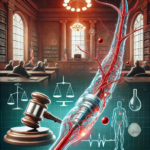Suboxone or naloxone is a drug used in medication-assisted treatment for opioid addiction treatment, particularly among the elderly, to help control addiction to opioids and treat opioid drug dependence. This drug can reduce the symptoms that come with opioid use in the long term. Suboxone is usually placed on the tongue (Sublingual) or on your cheeks (Buccal) and dissolves into your mouth. Suboxone comes in 4 different strengths: Clinical trials show its effectiveness in stopping opioids. It can be used to keep patients with opioid dependency in treatment for 24 weeks. Suboxone’s effectiveness depends on the duration of treatment for the person. These forms include a sublingual film and sublingual tablets. Other drug forms Suboxone contains two drugs: buprenorphine and naloxone.
Suboxone: Side Effects and Dosage
Facing opioid dependence can be a daunting and life-altering challenge. For many individuals, the grip of addiction feels insurmountable. In the quest to overcome this dependence, Suboxone has emerged as a vital medication for opioid addiction treatment. Suboxone combines buprenorphine and naloxone to treat opioid dependence, reducing withdrawal symptoms and cravings. This medication has become a cornerstone in addiction treatment, helping countless individuals reclaim their lives from the shadow of opioid dependency. Medication-assisted treatment, including Suboxone, is used as part of a comprehensive treatment plan for opioid use disorder.
Mass Tort America is dedicated to assisting individuals struggling with opioid addiction. Our expertise ensures that those affected by this condition receive the necessary information and support to make informed decisions about their treatment options. By understanding Suboxone’s uses, side effects, and proper dosages, we aim to provide a comprehensive resource for those seeking to break free from addiction. Recognizing and treating opioid overdose symptoms is crucial in emergency situations.
How Suboxone Works For Opioid Dependence Treatment
Suboxone is a medication specifically designed to address opioid dependence. Suboxone works to treat pain. Suboxone may be beneficial for people who have both chronic pain and opioid dependence. Its primary components, buprenorphine and naloxone, work together to alleviate withdrawal symptoms and reduce cravings. Buprenorphine, a partial opioid agonist, binds to opioid receptors in the brain, providing enough stimulation to prevent withdrawal without producing the intense high associated with full opioid agonists like heroin or morphine. This property makes buprenorphine an effective tool in managing opioid dependence. Suboxone helps manage opioid withdrawal symptoms as part of detoxification programs.
Naloxone, the second component of Suboxone, is an opioid antagonist. It is included to prevent misuse of the medication. When taken as prescribed, naloxone has minimal effects because it is poorly absorbed when taken orally. However, if someone attempts to inject Suboxone, naloxone will block the opioid receptors, causing withdrawal symptoms and deterring abuse. This combination ensures that Suboxone is both effective in treating dependence and safe from being misused. Suboxone is FDA-approved to treat opioid dependence.
The use of Suboxone in medication-assisted treatment (MAT) has been supported by numerous studies showing its efficacy in reducing opioid use, decreasing overdose deaths, and improving retention in treatment programs. By integrating Suboxone into a comprehensive treatment plan that includes counseling and behavioral therapies, individuals have a greater chance of achieving and maintaining recovery.
Suboxone Dosage: Finding The Right Balance
Determining the correct dosage of Suboxone is crucial for its effectiveness in treating opioid dependence. The process typically begins with induction, where the patient starts taking Suboxone under medical supervision. During this phase, the healthcare provider adjusts the dose to alleviate opioid withdrawal symptoms and reduce opioid cravings without causing sedation or euphoria. The goal is to find the lowest effective dose that manages symptoms and supports the patient’s recovery.
Once the appropriate dose is determined, patients enter the maintenance phase. In this phase, the dosage is kept consistent to maintain stability and prevent relapse. Regular follow-ups with a healthcare provider are essential to monitor the patient’s progress and make any necessary adjustments. Dosage may vary based on factors such as the severity of addiction, the presence of co-occurring mental health conditions, and individual response to the medication.
It’s important for patients to adhere strictly to the prescribed dosage and schedule. Taking Suboxone more frequently or in larger amounts than prescribed can lead to adverse effects or diminish its efficacy. Conversely, missing doses or discontinuing use abruptly can trigger opioid withdrawal symptoms and increase the risk of relapse. Proper dosage management, under the guidance of a healthcare professional, is key to the success of Suboxone treatment. Gradually tapering off the dosage is crucial to prevent Suboxone withdrawal and ensure a smoother transition off the medication.
Severe Withdrawal Symptoms
Suboxone is a form of naloxone. Suboxone is an ingredient for avoiding misuse and preventing a drug’s use and can cause opioid withdrawal symptoms if you use Suboxone. Naloxone has been shown in recent research to block opioid use in patients with chronic erectile problems. Depending on how much Suboxone a person uses, it blocks any effects in their body from other drugs. This may result in immediate opioid relapse. Using this Suboxone sublingual film will also not affect withdrawal symptoms. Because this drug releases naloxone.
Understanding The Side Effects Of Suboxone
While Suboxone is effective in treating opioid dependence, it is not without potential side effects. Understanding these side effects can help patients and healthcare providers manage and mitigate them effectively. Common side effects of Suboxone include headaches, nausea, constipation, and insomnia. These symptoms are generally mild and tend to diminish as the body adjusts to the medication.
Buprenorphine is an opioid that has been shown to cause breathing difficulties. It must be taken as soon as it comes out. What is the best way to gradually decrease your dosage of buprenorphine? It is also helpful in alleviating any difficulty in withdrawing. Withdrawal symptoms typically peak within a couple of days after buprenorphination is discontinued. However, symptoms can last a couple of weeks. Buprénorphine can cause difficulty driving or using heavy equipment. If your prescription is reduced or if your prescription has been changed then the risk of a crash is high.
Suboxone is sometimes used off-label to help with chronic pain in certain patients, despite this use being controversial and not well-established.
Some patients may experience more severe side effects, such as respiratory depression, particularly if Suboxone is taken in higher doses or combined with other central nervous system depressants like alcohol or benzodiazepines. It’s crucial for patients to inform their healthcare provider about all medications they are taking to avoid dangerous interactions. In rare cases, individuals may develop an allergic reaction to Suboxone, characterized by symptoms like rash, itching, and swelling. Immediate medical attention is required if an allergic reaction occurs.
Long-term use of Suboxone may lead to dependence on the medication itself, though this is generally less severe than dependence on full opioid agonists. Gradual tapering under medical supervision can help mitigate withdrawal symptoms if discontinuation of Suboxone is necessary. Regular communication with a healthcare provider ensures that any side effects are promptly addressed and that the treatment plan remains effective and safe.
Why Choose Mass Tort America For Your Case?
Choosing Mass Tort America for your legal needs ensures you receive dedicated support from a team that understands the complexities of opioid addiction treatment and the legal landscape surrounding it. Our commitment to providing personalized care means we handle each case with the utmost attention to detail and compassion. We understand the challenges faced by individuals and families dealing with opioid addiction, and our experienced team is equipped to offer the guidance and representation needed to navigate these difficulties. We also provide medication-assisted treatment to support your recovery journey.
Mass Tort America has a national reach, allowing us to assist clients from all over the country. Our Concierge Team is dedicated to coordinating every aspect of your case, ensuring a seamless and supportive experience. By choosing Mass Tort America, you benefit from our extensive knowledge, comprehensive resources, and unwavering commitment to securing the best possible outcomes for our clients.
If you or a loved one is facing opioid dependence and needs assistance, don’t hesitate to reach out to Mass Tort America. We are here to provide the support and representation you need to reclaim your life. Contact us today at 800-356-4338 or visit our contact form at https://masstortamerica.com/contact/ for more information.



















